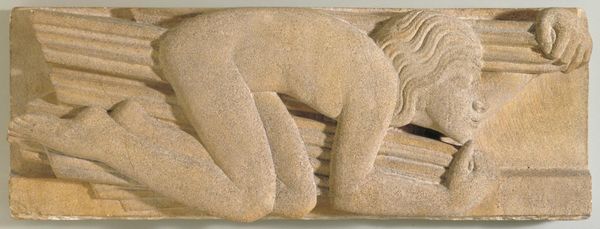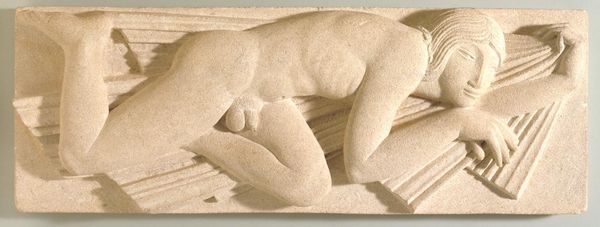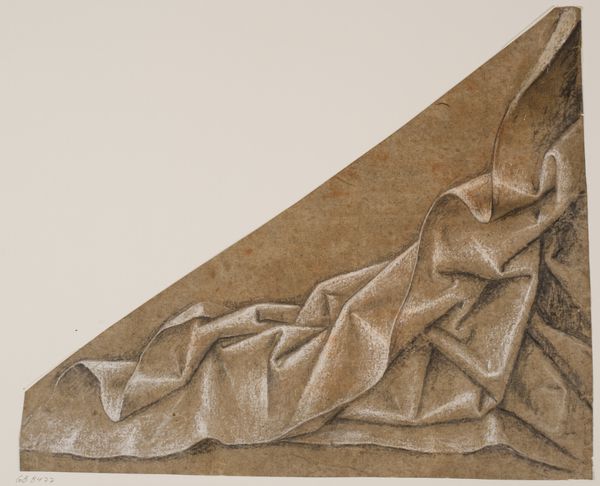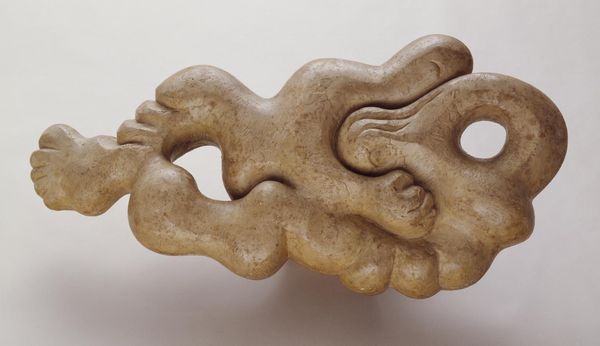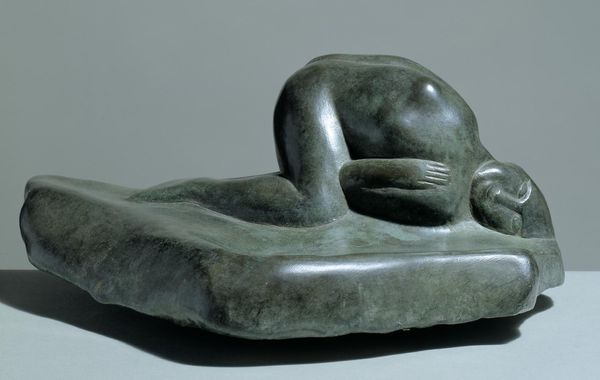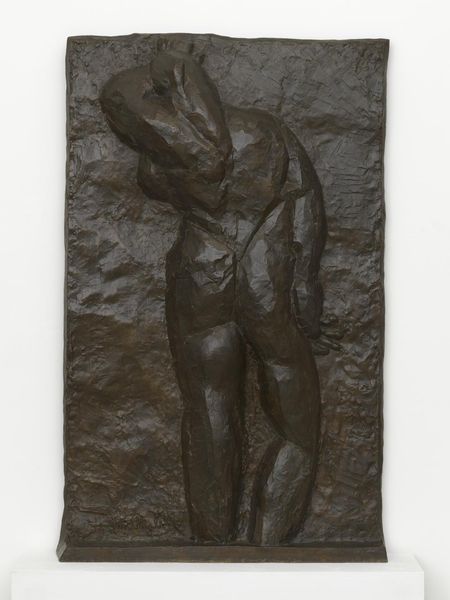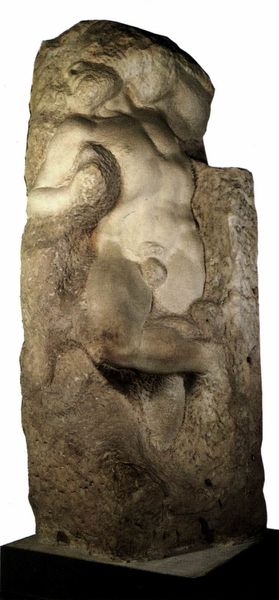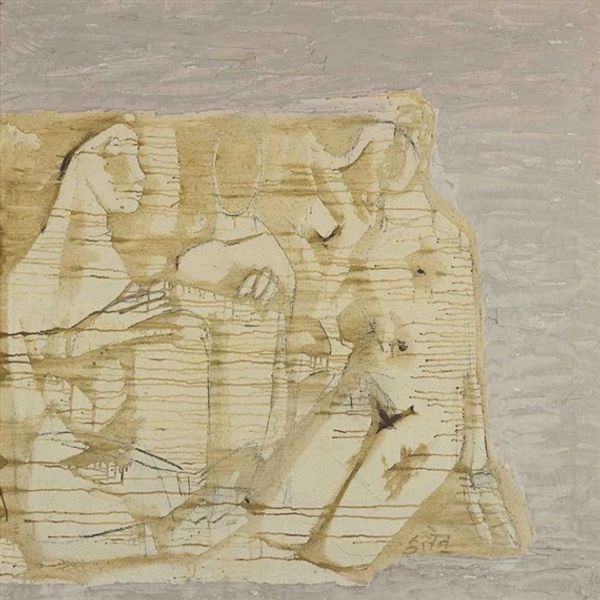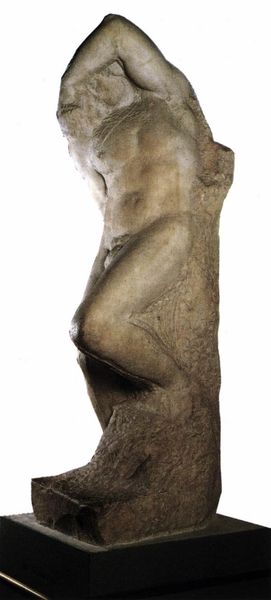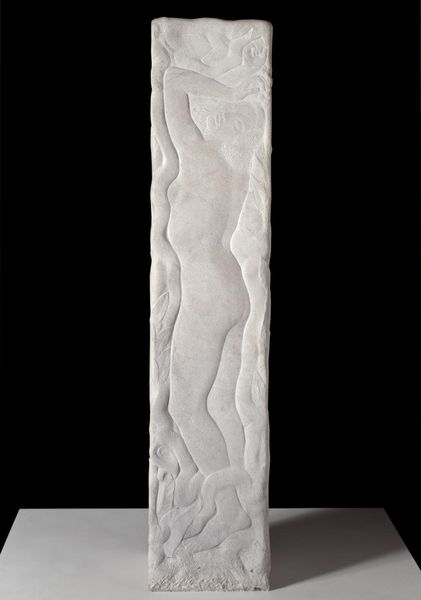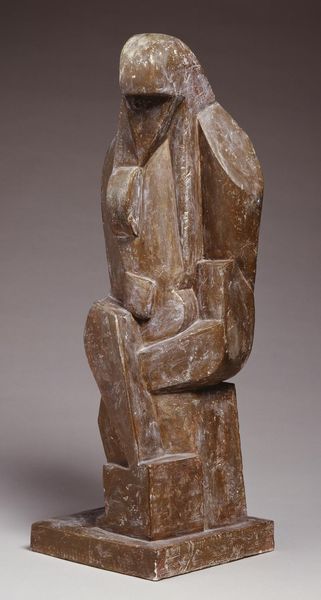
Dimensions: object: 255 x 685 x 100 mm, 26.3 kg
Copyright: CC-BY-NC-ND 4.0 DEED, Photo: Tate
Editor: Here we have Eric Gill's "Model for Sculpture: The South Wind," crafted from stone. The texture is striking; it really emphasizes the weight and physicality of the piece. What stands out to you about it? Curator: Gill's direct carving method from the stone is pivotal here. He's not just representing the wind; he's wrestling with materiality, engaging in the labor of revealing the figure from the block itself. The social context of Gill's workshops, where assistants contributed, complicates the idea of singular authorship. Editor: So, you’re saying the process and the people involved are as significant as the final form? Curator: Precisely. The consumption of art often obscures the means of its production. Understanding the stone’s origins, the tools used, the hands that shaped it – all are essential to comprehending Gill’s artistic intent. Editor: That gives me a fresh perspective. I was focusing solely on the figure, but now I see the importance of the whole production process. Curator: And how that intersects with cultural expectations of labor, gender and class within the art world.
Comments
tate 7 months ago
⋮
http://www.tate.org.uk/art/artworks/gill-model-for-sculpture-the-south-wind-t06997
Join the conversation
Join millions of artists and users on Artera today and experience the ultimate creative platform.
tate 7 months ago
⋮
Gill pioneered a return to traditional craft skills, in particular stone carving. In 1928 he led a team of sculptors commissioned to carve reliefs symbolising the four winds for the exterior of the new London Underground headquarters at St James’s Park station. These are copies he made later. The style of the reliefs demonstrates Gill’s admiration for English and French medieval sculpture. Gallery label, September 2016
